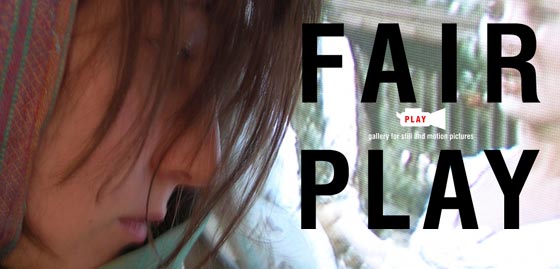| Dominik Lejman |
The Running Track
Duration: video loop (40 min ), 2:09min. each segment
Production year: 2004
source: mini DV, media: DVD (repeat option included)
Statement
How much time is left to be recognized as a single individual involved
in his/her own personal daily ritual before merging in to the
statistical abstraction? Ment as a projection piece, my video
uses a loop structure as a genre for the obsessivness of daily
ritual performed on the running truck. Running backwards, a performer
when struggling with his insufficiency of behaviour, dissapears
into the void - environment attempting to adjust his daily scenario
into the requirements of the running truck's pace. |
| |
| Biography |
| Domink Lejman was born in 1969 in Gdaƒsk (Poland). |
|
|
| Education |
| 1989 – 1993 |
Academy of Fine Art, Gdaƒsk |
| 1993 – 1995 |
Royal College of Art, Degree of Master of Arts, London |
|
|
| Selected group exhibitions |
| 2004 |
Stop&Stor, LUXE Gallery New York |
|
Anxiety of Influence, Stadtgalerie Bern |
|
Distances? Le Plateau, Fonds regional d’art contemporain
d’Ile-de-France, Paris |
|
Architectures: Meta-structures of Humanity, Morphic Strategies
of Exposure, |
|
Polish Pavilion, 9th International Architecture Exhibition
Venice 2004 |
| 2003 |
A Decade, Centre for Contemporary Art Ujazdowski Castle, Warsaw |
|
Artists in Residence, Location One, New York |
|
Prague Biennale 1, National Gallery, Veletrzni Palac, Prague |
|
Central Air Condition, Polnishes Institut, Berlin |
|
Ogród Statystyczny, Galeria Bia∏a, Lublin |
| 2002 |
Dominik Lejman, Capri, Berlin |
|
Vital Statistics, Norrtalje Konsthall, Sweden |
|
4 Rooms, Bunkier Sztuki, Kraków |
|
Basic Elements, Rauma Biennale Balticum 02, Rauman Taidemuseo,
Finland |
| 2001 |
A floor piece, PGS Sopot/ State Gallery, Sopot |
|
homeworkhome, office spaces +private flat |
|
sexofficesex, Ba∏tycka Galeria Sztuki Wspó∏czesnej,
S∏upsk |
|
Re:location, OK Centrum für Gegenwartskunst, Linz, Austria |
| 2000 |
After the Wall, National Galerie Hamburger Banhoff, Berlin |
|
Scena 2000 Centre for Contemporary Art Ujazdowski Castle, Warsaw |
|
The Luxury of Survival, Centre for Contemporary Art Ujazdowski
Castle, Warsaw |
| 1999 |
After the Wall, Moderna Museet, Stockholm, Museum Ludwig, Budapest |
|
|
| Public projects |
| 2002 |
Hospital as a landscape for the little spectacles, Culture
2000, Art dans la Cite, Paediatric Hospital AM ul.Dzia∏dowska,
Warsaw |
| 2003 |
Mapping Discoveries II, Paediatric Hospital, Galeria Arsena∏ Bialystok |
| 2004 |
Animating Spaces, RxArt project for Shneider’s Children
Hospital, Long Island, NY |
|
Con/sequenze, sight–specific video installation, Villa
Cellimontana, Rome |
|
|
| Residencies |
| 1997-98 |
Gasworks Studios, London |
|
|
